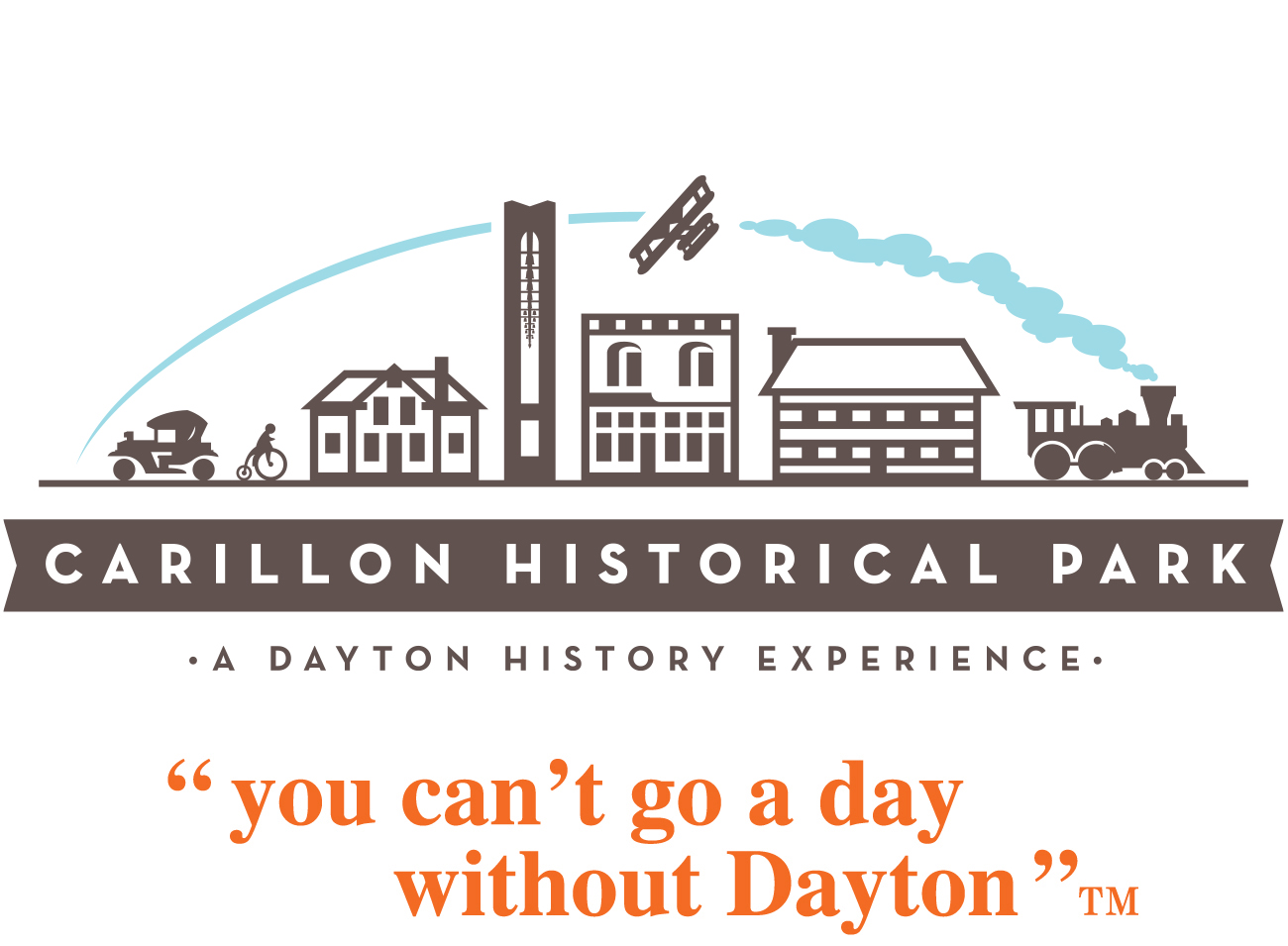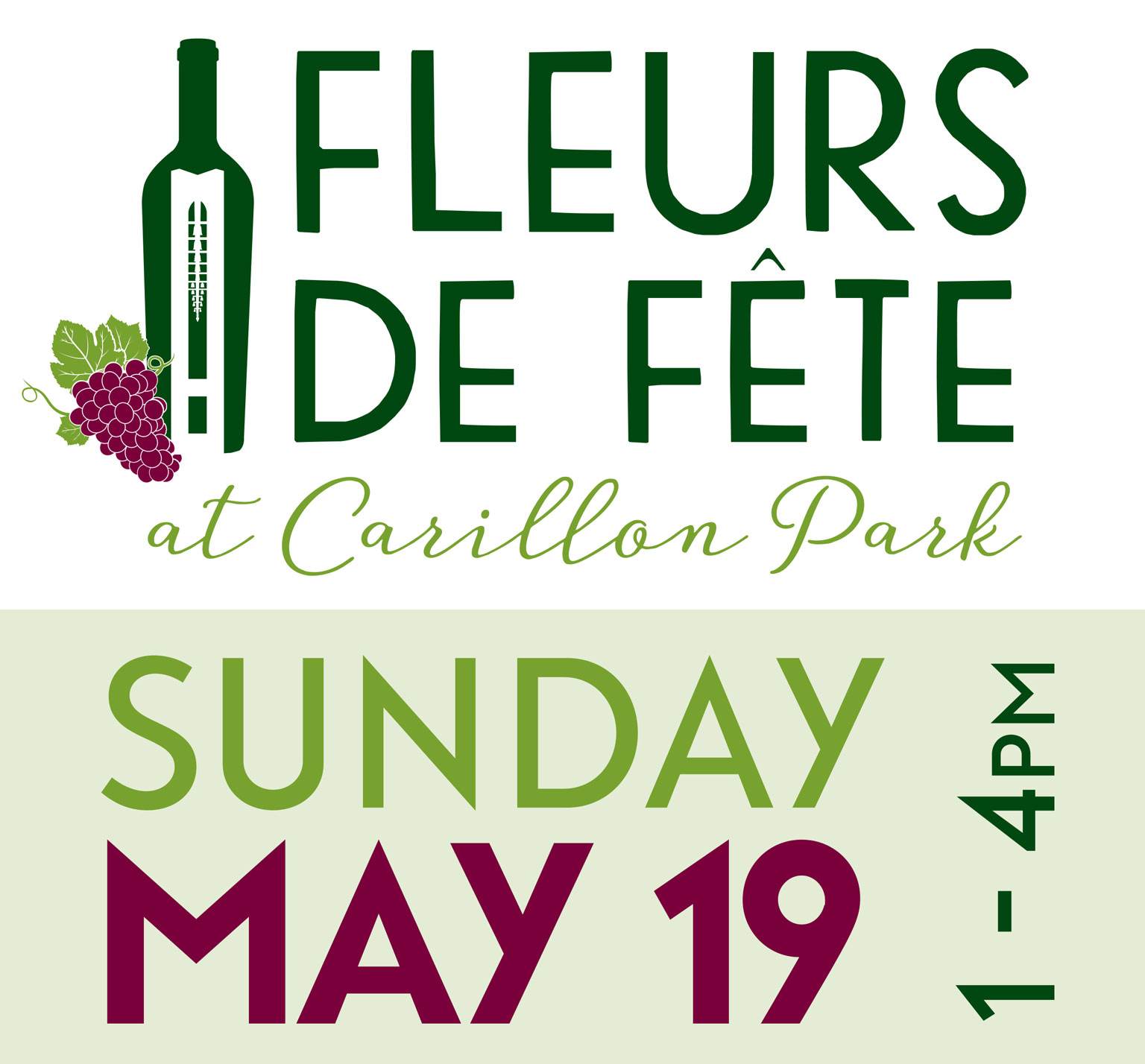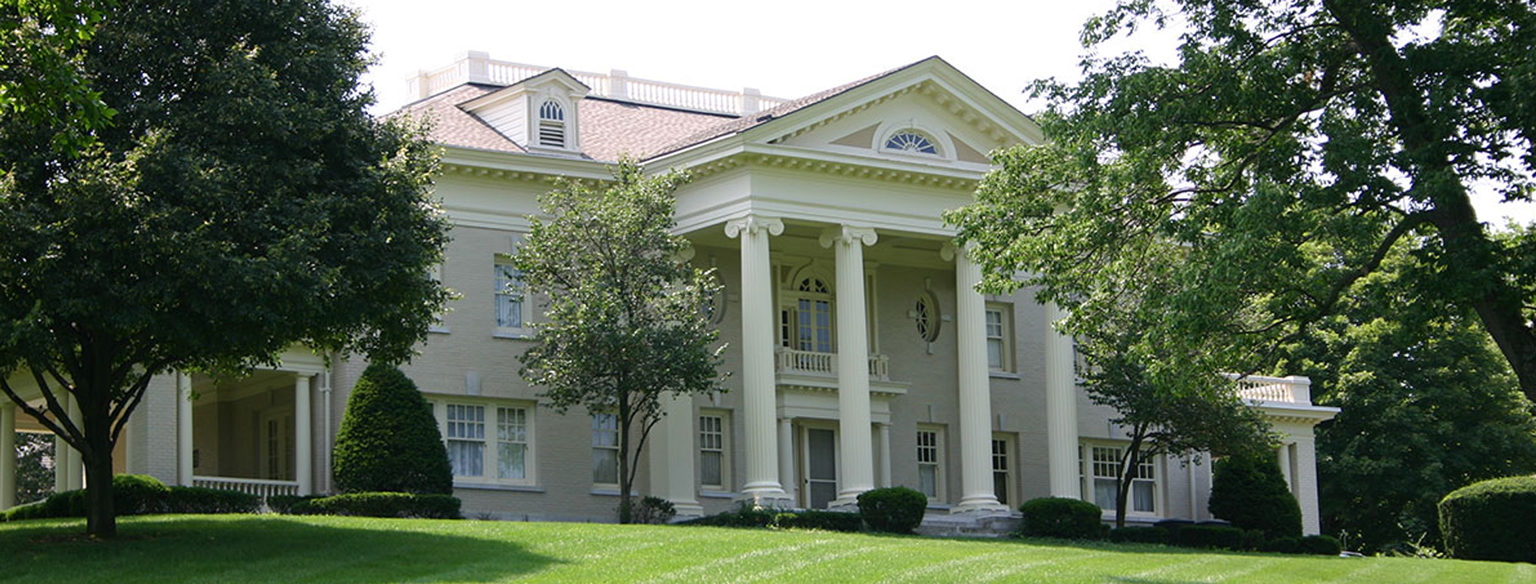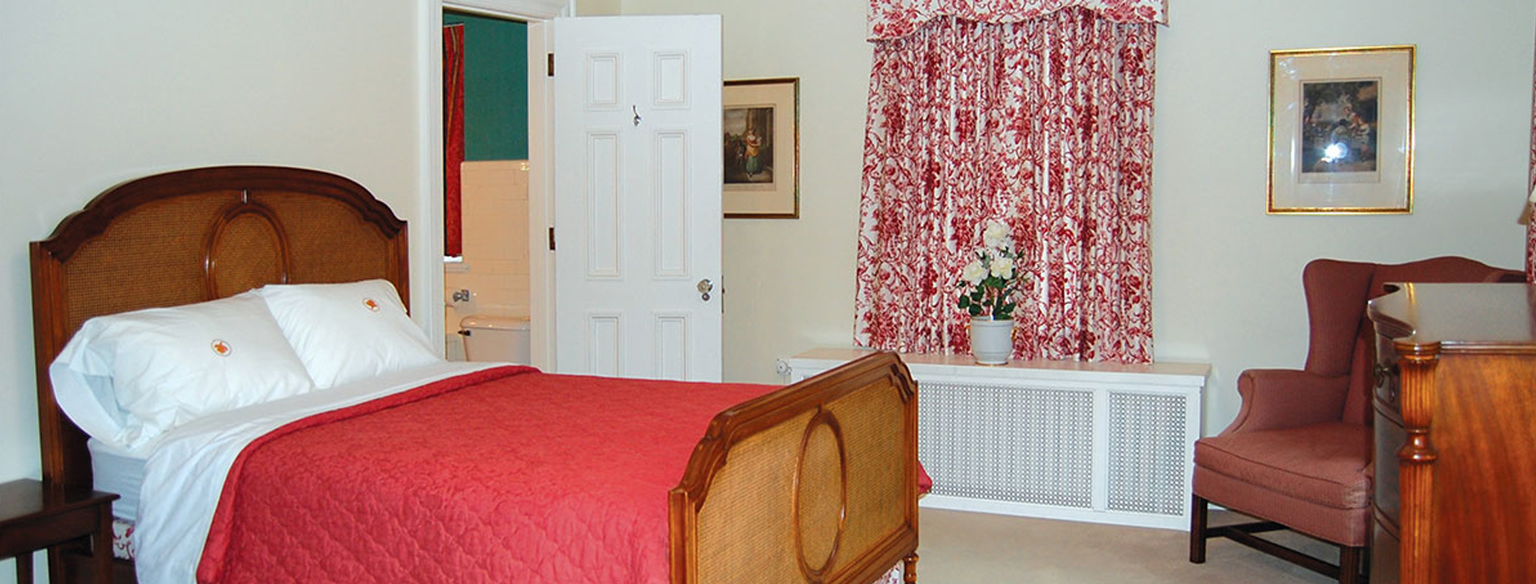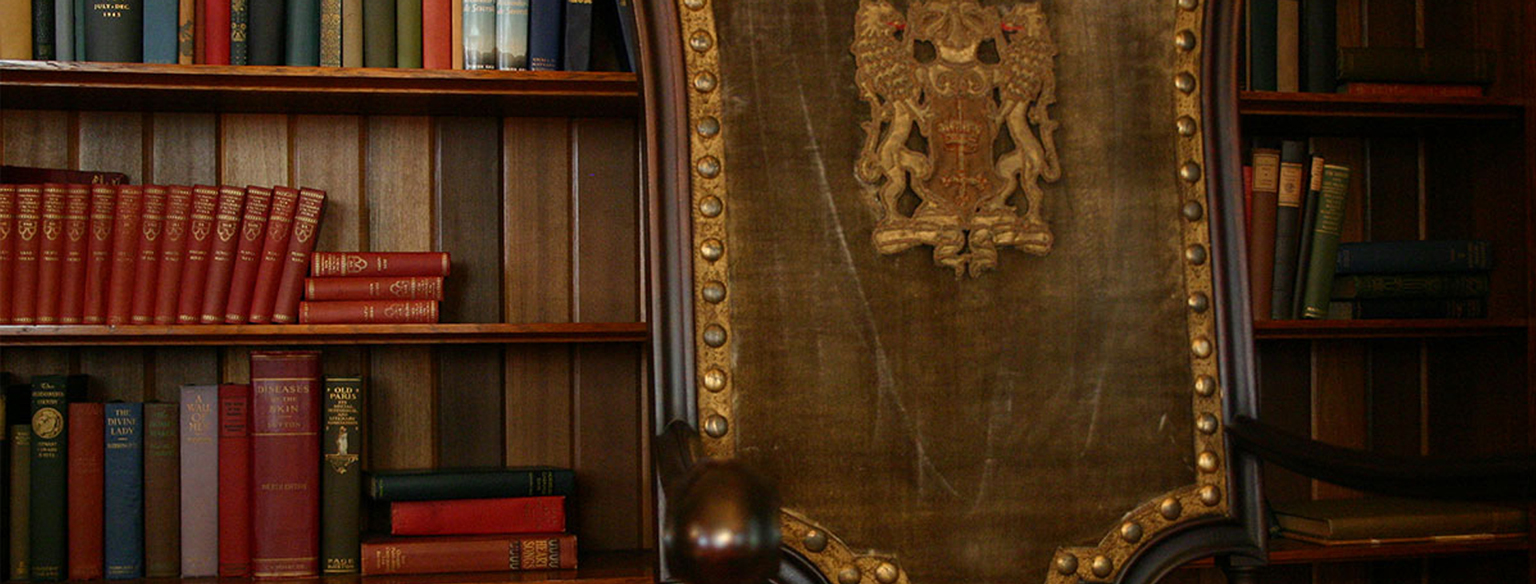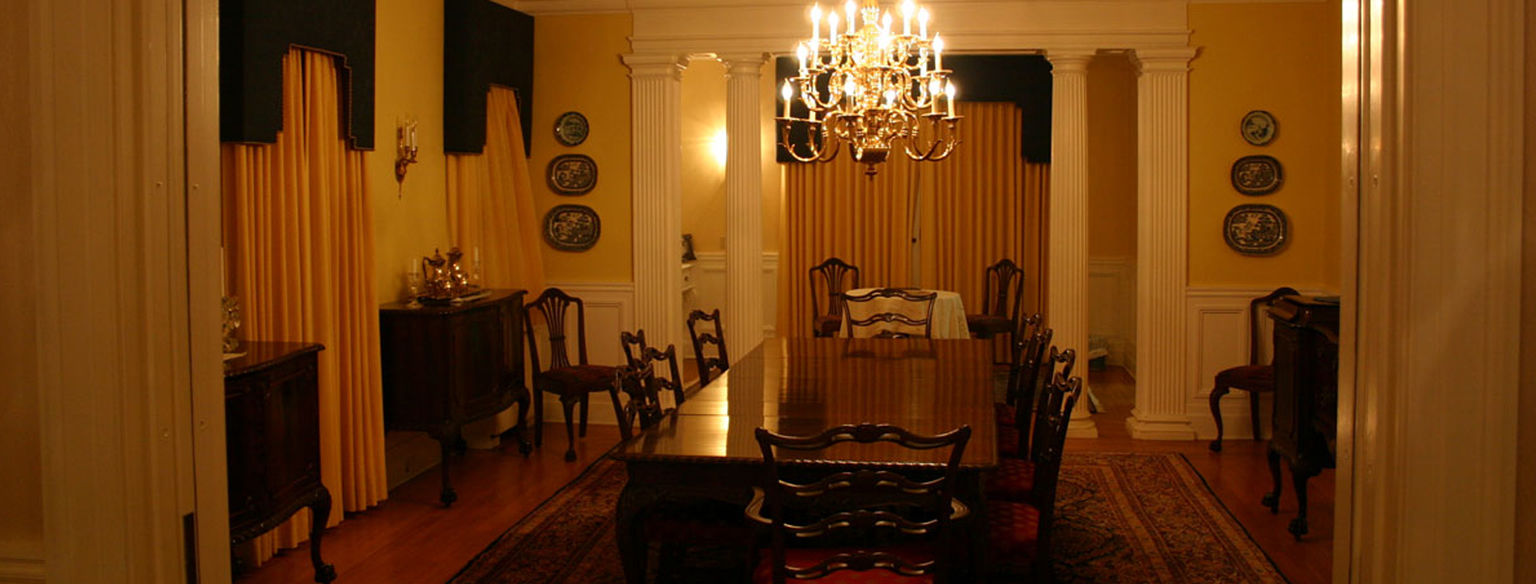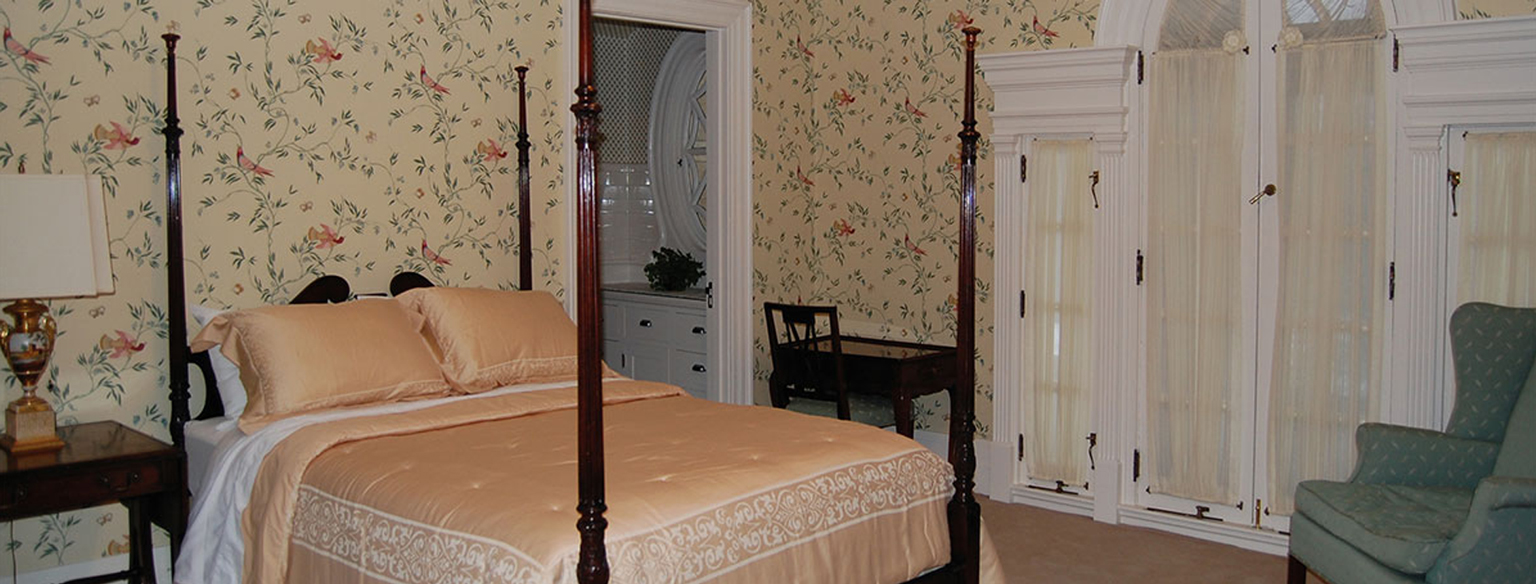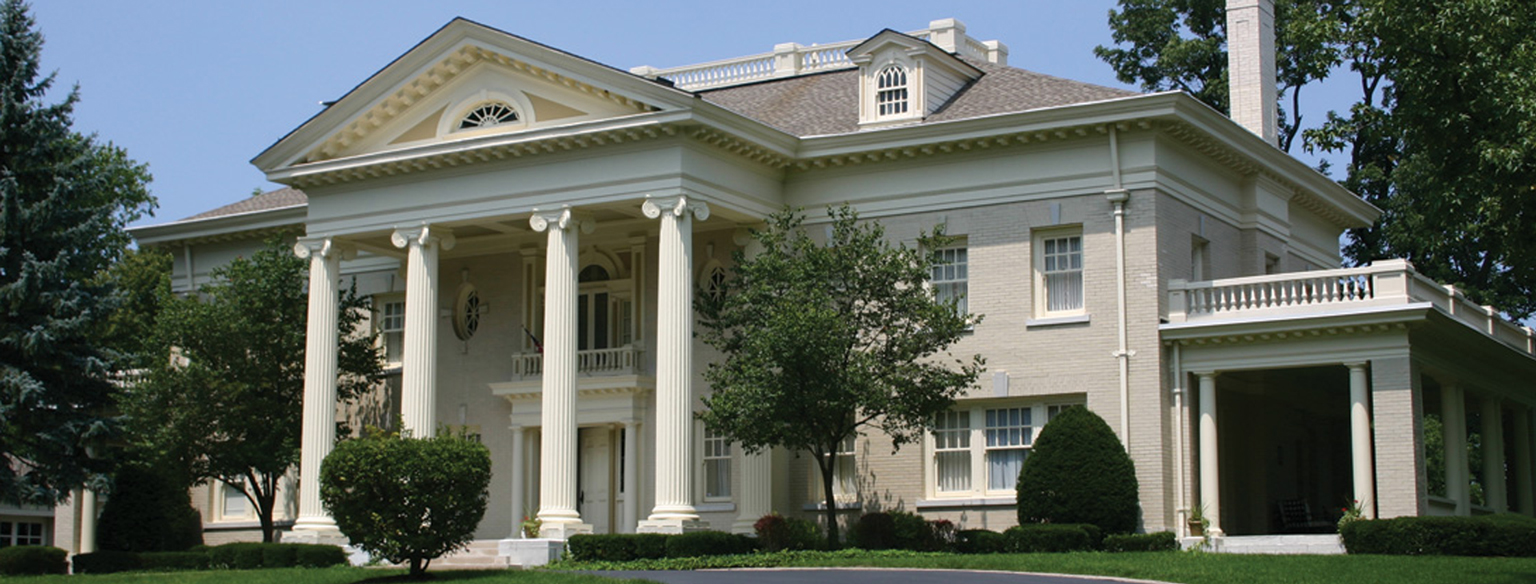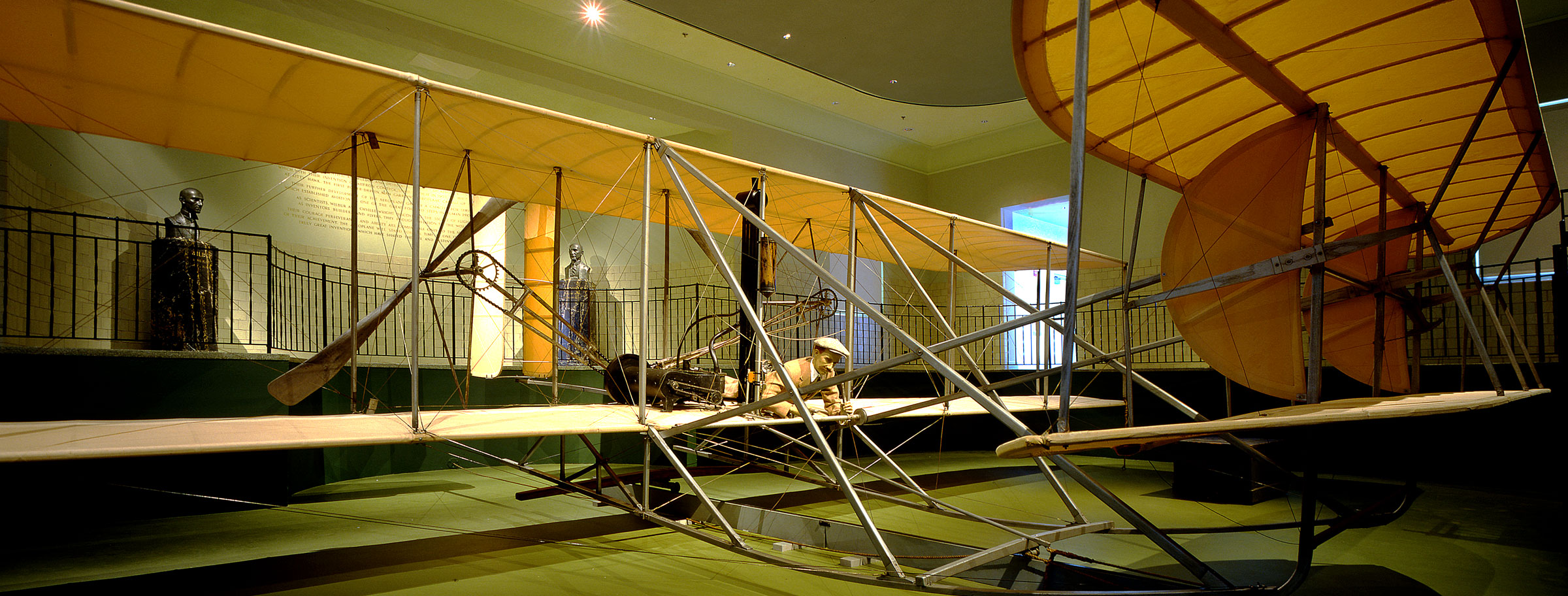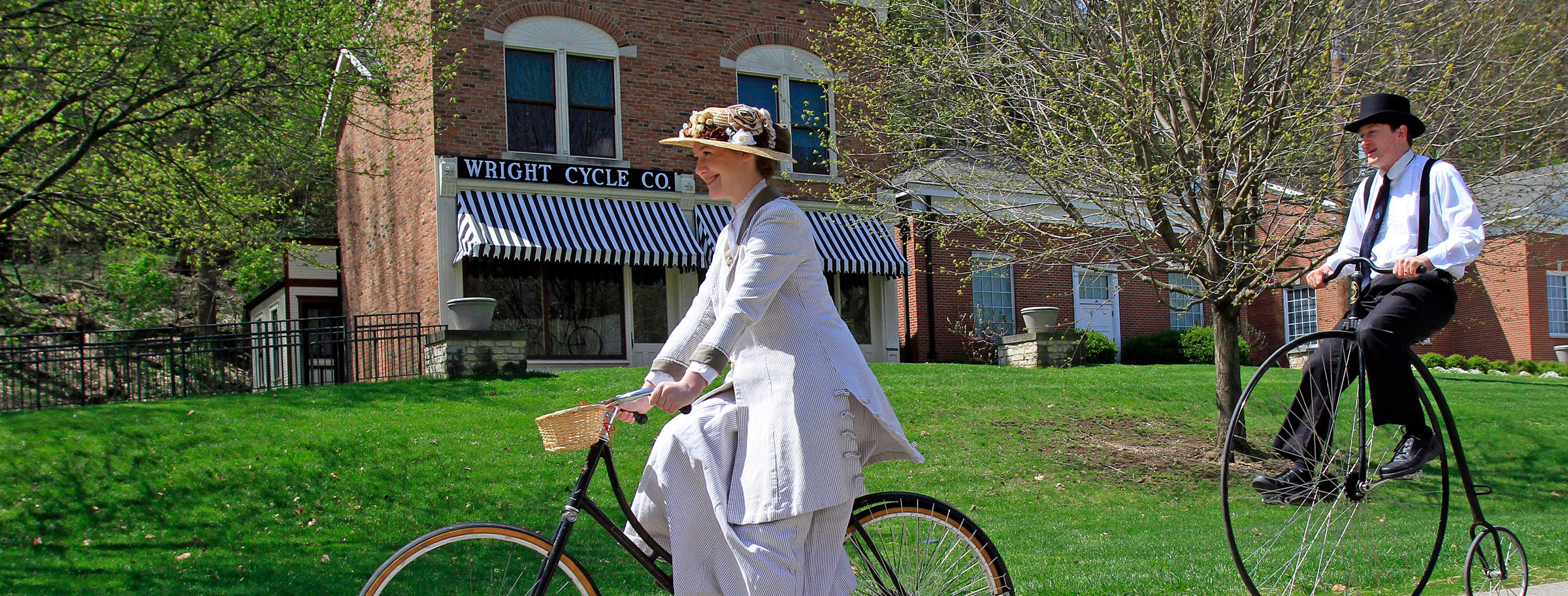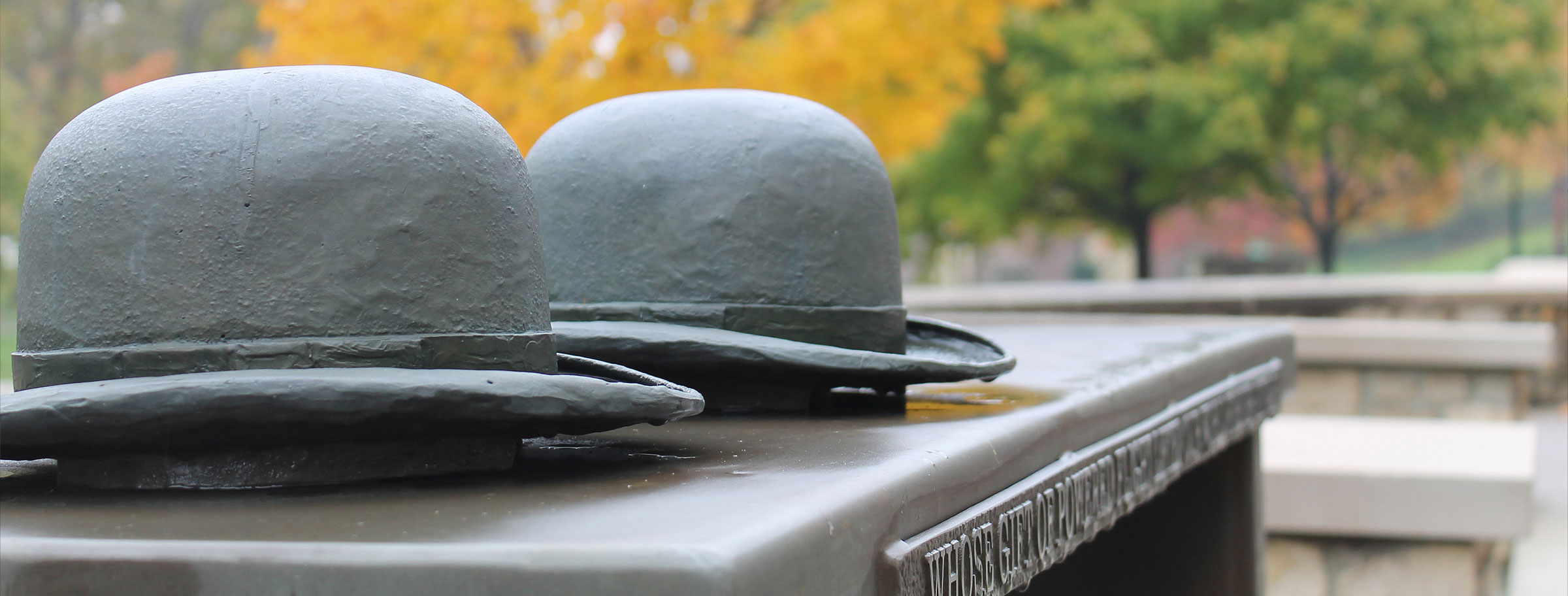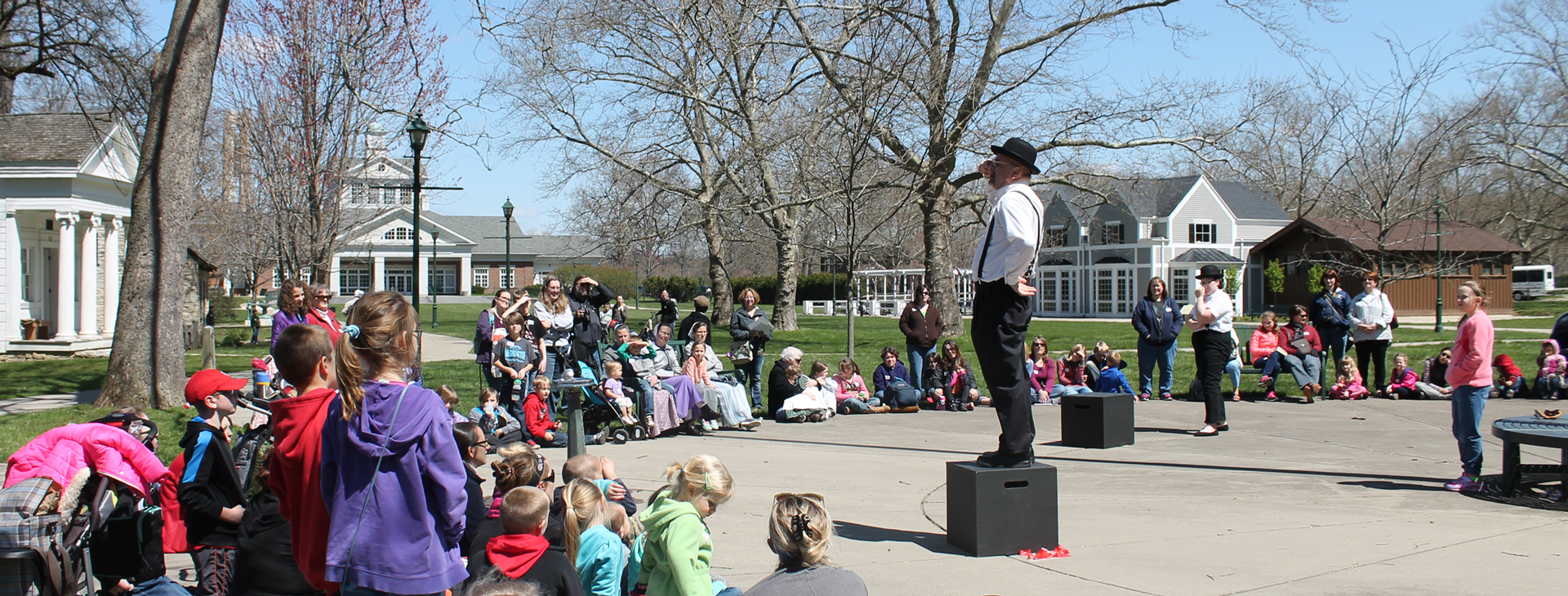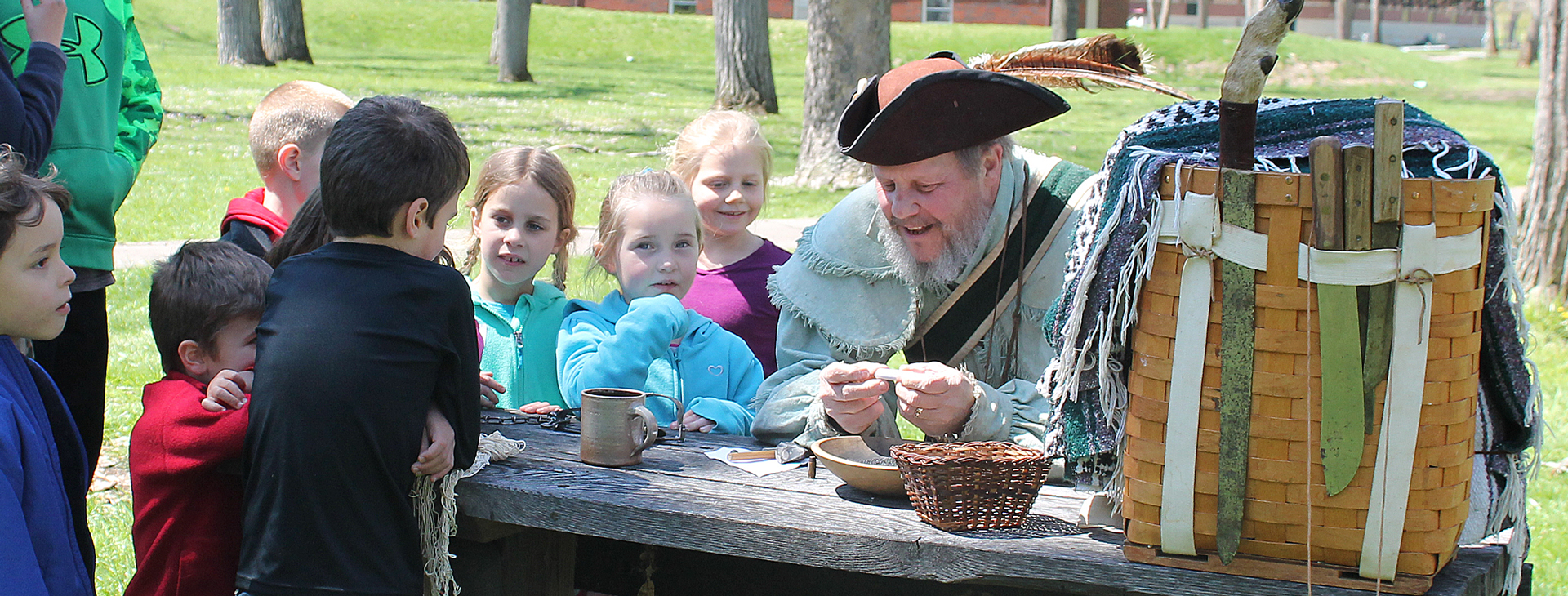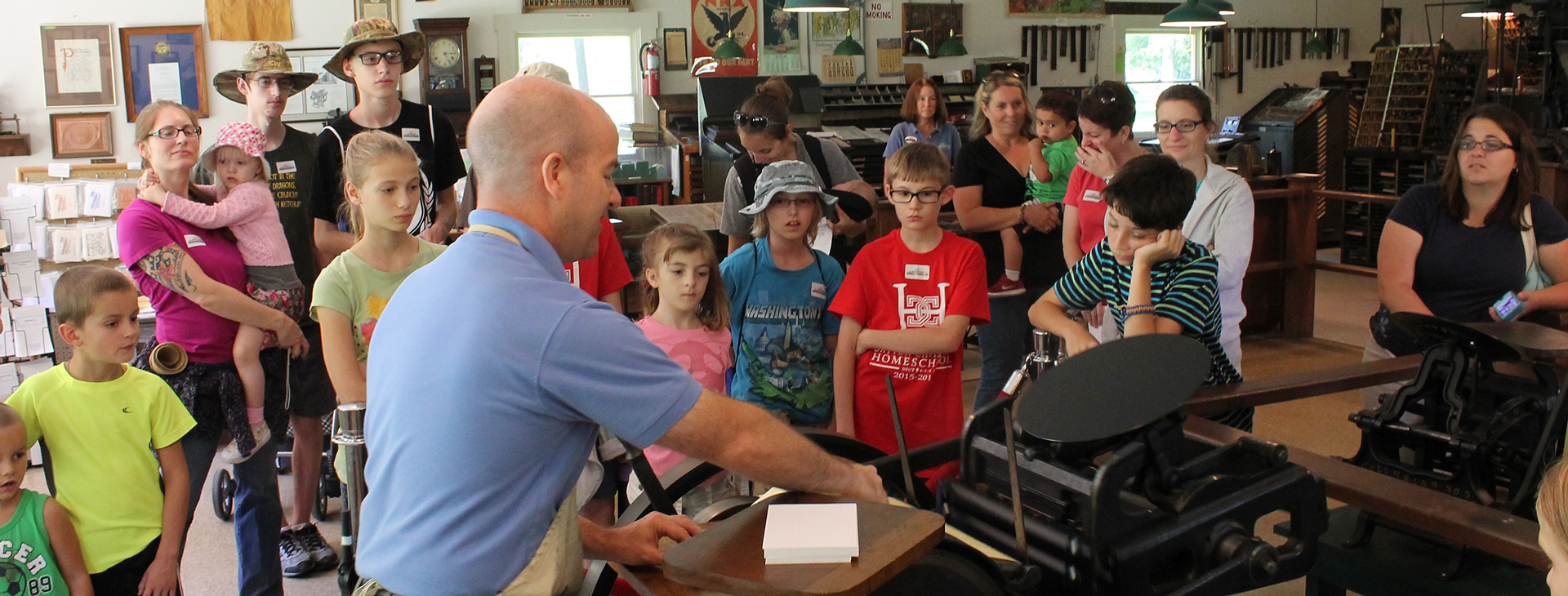Wright at Home
12:00pm–5:00pm
Dayton, OH 45402
(937) 293-2841
Wright at Home
Held each April, Wright at Home is an open house of the Wright Family Mansion, also known as Hawthorn Hill. Travel back in time and enjoy a walking tour of the surrounding neighborhood.
During Wright at Home, visitors join the ranks of Charles Lindbergh, Henry Ford, and Thomas Edison as guests at Hawthorn Hill, Orville Wright’s success mansion.
Dayton History presents Wright at Home in conjunction with the Oakwood Historical Society. Join the two organizations for this special visit to Hawthorn Hill — the world’s first pilot’s last home.
Wright Brothers National Museum
Wright Brothers National Museum
The John W. Berry, Sr. Wright Brothers National Museum has more Wright artifacts on display than any other place in the world, including the 1905 Wright Flyer III: the only airplane designated a National Historic Landmark, the first practical flying machine, and what the Wright brothers considered their most important aircraft.
Referred to as “the first pilot’s last project,” preserving the 1905 Wright Flyer III for Carillon Historical Park was Orville Wright’s last major project before he died on January 30, 1948. And while Orville died before Carillon Park was opened in 1950, he had a hand in designing Wright Hall—the building that houses the 1905 Wright Flyer III.
Adjacent to Wright Hall is Carillon Historical Park’s Wright bicycle shop—a replica of Wilbur and Orville’s fifth and final store at 1127 W. Third St. in West Dayton. In 1936, with Orville’s endorsement, Henry Ford purchased the original building, and in 1938, it was moved from 1127 W. Third Street and dedicated at Greenfield Village at The Henry Ford Museum in Dearborn, Michigan. Carillon Park’s cycle shop resembles how the Wright brothers’ store would have appeared between mid-October to mid-December 1901.
Trees of Carillon Park – American Beech
American Beech – Fagus Grandifolia
A slow-growing tree known for its smooth, thin, gray bark and spreading canopy, the American beech is found throughout Ohio. Featuring a short, rounded, often hollow trunk, it is frequently used as a home by animals such as squirrels, opossums, and racoons, and when fully matured, it can reach a height of 60-80 feet. Adaptable to various soil pH levels, it prefers a rich, well-drained soil with consistent moisture; it also prefers partial or direct sunlight, though can survive in shadier conditions.
The leaf of an American beech is 2-4 inches long and simple, growing in an alternating pattern, with slightly undulating margins and coarse serrations. In fall, the leaves deepen from a yellow-green shade to a rich golden-brown. Younger trees then hold onto these leaves through winter while older beeches will lose all but the leaves on their lower, interior branches. Beeches produce a fruit with a prickly outer husk, which, in late summer and early fall, splits open to reveal one or two edible, triangular nuts that are high in fat and protein, eaten by both birds and mammals.
Beech wood is known for its strength, ability to be bent once steamed, and tendency to wear smoothly. For this reason, it is historically the wood of choice for a wooden plane body, a common woodworking tool used to smooth and shape other woods. It is also traditionally a wood of choice for chair-making, thanks to its pliable nature, at least after steaming.





Citations:
Information:
https://archive.org/details/woodwrightsshopp0000unde/page/12/mode/1up?q=Beech
Underhill, Roy. 1981. “The Woodwright’s Shop : A Practical Guide To Traditional Woodcraft : Underhill, Roy : Free Download, Borrow, And Streaming : Internet Archive”. Internet Archive. https://archive.org/details/woodwrightsshopp0000unde/page/n2/mode/1up?q=.
ODNR Division of Wildlife. 2020. “Trees Of Ohio Field Guide”. Columbus: Ohio Department of Natural Resources.
Images:
Beech_amr_lf_lg.jpg
beech_amr_lf2_lg.jpg
7743232.jpg
a33753ecfebfb448d2f3545111b6f89a.jpg
You Can’t Go A Day Without Dayton
You Can’t Go a Dayton Without Dayton
Can you go a day without Dayton? In this series, you will discover the amazing stories of how Dayton changed the world!
Aviation
The last time you traveled, made an online order, or enjoyed fresh produce out of season, did you thank the Wright brothers?
Carillon Historical Park houses the 1905 Wright Flyer III: the only airplane designated a National Historic Landmark. Gifted to Carillon Park by Orville Wright himself, the Wright Flyer III is the world’s first practical airplane.
Electric Starter
Inside Deeds Barn—now housed at Carillon Park—Daytonian Charles Kettering and his Barn Gang invented the electric starting system for the automobile. It opened up the freedom and convenience of driving to almost anyone!
Pop-Top
You’d be searching for a church key every time you wanted to enjoy your favorite canned beverage.Invented by Daytonian Ermal Fraze, pop tops are employed around the world 275 billion times a year!
LCD
The next time you get lost in your mobile device, remember the liquid crystal display you so cherish was perfected by Dayton’s John Janning at NCR!
Ritty Dial
The first practical cash register was invented by Daytonian James Ritty. Known as the Ritty Dial, it sparked a business revolution that made Dayton the world’s largest supplier of business machines for the next half-century!
Receipts
No matter what you’re shopping for, most of us don’t think twice about getting a receipt. Thanks to Daytonian John H. Patterson of NCR, his now centuries-old concept of getting a receipt continues to protect merchants and customers around the world!
>> Dayton History Press Images
DAYTON HISTORY PRESS IMAGES
Disclaimer: Images are for press and media purposes only. Images may not be copied, reproduced, disseminated, or used for any other purposes.
Credit: All photos should be credited to Carillon Historical Park except where otherwise noted. Thank you for your support of Dayton History!
A Carillon Christmas
- Aerial View of Carillon Tree of Light
- Underneath the Carillon Tree of Light
- Snowfall Upon A Carillon Christmas
- Victorian Carolers
- Wright Brothers National Museum Under Snow During A Carillon Christmas
- Carillon Historical Park Living History Specialist Rachael Zimmerman preparing chestnuts
- Carillon Historical Park Living History Specialist Rachael Zimmerman preparing chestnuts
- Roasted chestnuts at Carillon Historical Park
Carillon Park Rail Festival
- The 1903 Barney & Smith wooden parlor car
- Bowling Green Station with Rail Fest logo
- Luggage inside Bowling Green Station
- The 1835 B&O #1, John Quincy Adams, the oldest-existing American-built locomotive
- Miniature Train 1
- Miniature Train 2
- Kids watching model trains
Culp’s Café
Easter Sunrise Service
Fleurs de Fête
Heritage Day with the Dayton Philharmonic
- High-wheel / historic bike riding. Photo: Skip Peterson.
- Clodbusters 19th century baseball
- Musket firing
- Heritage Day crowd
Old River Park Artifacts
- Old River Park Swimming Pool Light Tower Archival (Kodachrome)
- Old River Park Relics Moved to Carillon Historical Park
- Old River Park Swimming Pool Light Tower Modern
Wright Brothers National Museum
- The 1905 Wright Flyer III: The only airplane designated a National Historic Landmark, the first practical flying machine, and what Orville considered the brothers’ most important aircraft. Orville Wright gifted the airplane to the park. Photo credit: Dan Patterson.
- The Korona V: The camera used to take the famous first flight photo on Dec. 17, 1903. Photo credit: Dan Patterson.
- Two 1901 Van Cleve Bicycles: Only five original Wright bicycles exist in the world. Two are at Carillon Historical Park. Photo credit: Skip Peterson.
- Singer Sewing Machine: The sewing machine used to sew the muslin fabric on the Wrights’ early gliders and airplanes. Photo credit: Skip Peterson.
Wright at Home • Hawthorn Hill
Trivia
History Trivia

This Week’s Question
Previous Questions
You can find Flip & Flops and many other toys in the Heritage Center of Dayton Manufacturing & Entrepreneurship.
“O Come All Ye Faithful” led the procession, calling Dayton to remain steadfast during trying times. NCR Factory News reported on the concert: “Although not yet formally dedicated, it is well on its way to being an established part of our lives … and this community will continue to appreciate the social and cultural value of this architectural masterpiece for which we are most grateful.”
“Success four flights Thursday morning all against a twenty- one mile wind started from level with engine power alone average speed through the air thirty-one miles – longest 57 seconds. XXX home Christmas. Orville Wright”
Carillon Historical Park’s special commemorative World War I exhibit, Over There: Dayton in the Great War, is on display for a limited time.
The Dayton Triangles locker room is located at Carillon Historical Park. The Park has future plans for the locker room.
Learn more about Ermal Fraze at Carillon Historical Park’s Heritage Center of Dayton Manufacturing & Entrepreneurship.
In 1970, while filmed in Dayton, the show was syndicated nationally. In 1974, the show was moved to WGN Studios in Chicago; in 1984, it was moved to WNBC Studios in New York. Over its 29 years,
Donahue (the show’s title was shortened) won 19 Emmy awards. It is credited with being the longest running syndicated talk show in American history.
The Dayton Triangles locker room is located at Carillon Historical Park. The Park has future plans for the locker room.
Take a tour of Hawthorn Hill, the Wright family home, and learn how the Wright brothers and their family influenced the world.
You can learn more about the history of NCR and Dayton’s spirit of innovation at the Heritage Center of Dayton Manufacturing & Entrepreneurship.
The school bell used by Katharine Wright while she was a Latin teacher at Steele High School is on display at the John W. Berry Wright Brothers National Museum.
Learn more about Carillon Historical Park.
Learn more about Charles F. Kettering at Carillon Historical Park’s Heritage Center of Dayton Manufacturing & Entrepreneurship. Inside the barn where Kettering and the Barn Gang invented the starter motor is a 1912 Cadillac.
Learn more about Charles F. Kettering at Carillon Historical Park’s Heritage Center of Dayton Manufacturing & Entrepreneurship.
The Barn Gang’s barn is located at Carillon Historical Park’s Heritage Center of Dayton Manufacturing & Entrepreneurship.
The John W. Berry Wright Brothers National Museum tells the story of Orville Wright and the Wright brothers in great detail. The Wright Brothers National Museum has more Wright family artifacts than any place in the world, including the 1905 Wright Flyer III: the only airplane designated a National Historic Landmark, the world’s first practical flying machine, and what the Wright brothers considered their most important aircraft.
After falling ill, Wilbur held on for three weeks before dying at the family’s 7 Hawthorn St. home in Dayton at 3:15 a.m. on Thursday, May 30, 1912. Maurice E. Wilson, reverend of the First Presbyterian Church, officiated his brief service, reading “Oh God, Our Help in Ages Past,” Psalm 23 and several other hymns and scriptures.
The John W. Berry Wright Brothers National Museum tells the story of Wilbur Wright and the Wright brothers in great detail. The Wright Brothers National Museum has more Wright family artifacts than any place in the world, including the 1905 Wright Flyer III: the only airplane designated a National Historic Landmark, the world’s first practical flying machine, and what the Wright brothers considered their most important aircraft.
The Colt .38 Super semiautomatic gun John Dillinger was carrying when he was arrested in Dayton is a highlight of the Dayton History Collections Department. Learn more about Dayton’s History by visiting us at Carillon Historical Park.
Lincoln spoke at Dayton’s Old Court House on September 17, 1859. The Daily Dayton Journal described the speech this way: “Old Abe …brought a large crowd of people to the appointed place and for nearly two hours the speaker was listened to with the utmost attention. Mr. Lincoln is one of the ‘self-made’ men; having, without the advantages of education, risen to the proud preeminence which he now occupies in his own state and in the United States.”
Want your children to learn more about the early history of Dayton? Enroll them today in Carillon Historical Park’s Settler Survival Camp the weeks of July 10–14, July 24–28, or July 30–August 4.
For more information, please contact the Education Scheduling Desk at (937) 293-2841 Ext. 127 or education1@daytonhistory.org.
Join us for a Deeds Carillon concert this Sunday, July 2. Typically held on Sundays and during Carillon Historical Park’s main events, Deeds Carillon concerts are performed by carilloneur Alan Bowman.
You can see the Rubicon and many more trains at Carillon Park Rail Festival this Saturday, June 24 from 9:30am–5:00pm and Sunday, June 25 from 11:00am–4:00pm.
Join us this Saturday, June 17 for a Patterson Homestead Open House.
By 1937, printing was the second largest industry in the United States. Due to the abundant water supply available, Dayton was heavily involved in the printing industry. In fact, as it was more cost-effective to print near the location of the paper mills, 25 of Ohio’s 36 paper mills were located right here in the Miami Valley.
The Carillon Historical Park Print Shop is the nation’s only fully operational 1930s letterpress job shop in a museum.
The Mind Your Ps & Qs Print Class is this Saturday, June 10 from 1:00–5:00pm. Taking place in Carillon Park’s 1930s Print Shop, the class explores Dayton’s printing history and teaches the art of letterpress printing. Registrants create their own personalized stationary using period techniques.
Space is limited to five registrants. Please contact the Education Scheduling Desk at (937) 293-2841 Ext. 127 or education1@daytonhistory.org for more information or to reserve your spot.
After auditioning to participate, students from across the greater Dayton region unite to form the Carillon Park Concert Band. Selections include everything from marches to Broadway tunes to movie music to light classics. The CPCB is currently under the direction of Kettering City School District Director of Bands Michael Berning.
The Carillon Park Concert Band performs this Sunday, June 4 at 2:00pm. The CPCB will also perform at 2:00pm on June 11, June 17, June 24, and June 25.
Carillon Historical Park preserves and celebrates Dayton’s unparalleled history from its founding to the modern day. Join us this Sunday, May 28th for Dayton Heritage Day with the Dayton Philharmonic Orchestra as we share the history of the Miami Valley through special activities, costumed interpreters, and much more.
Draped in patriotic decorations, the Park welcomes thousands of guests each year to this family friendly event! After a full day of historical demonstrations, miniature train rides, and general merriment, the Dayton Philharmonic Orchestra fills the air with beautiful music. Heritage Day is a festive and patriotic way to ring in summer.
Join us this Sunday, May 21 from 1:00pm–4:00pm for Fleurs de Fête. Guests enjoy more than 400 wine samplings and delicious dishes from dozens of local restaurants at Dayton’s original “party in the park.”
Many chapters of transportation history are celebrated at the James F. Dicke Family Transportation Center—from our nation’s rail history to Ohio’s pioneer history to Dayton’s unique spot in claiming the oldest, continuously-operating, electrically-propelled public transit system. Designed to resemble both a train station and a roundhouse, the Transportation Center houses many of Carillon Historical Park’s original artifacts, and guests are welcome to walk through many of the artifacts on display.
The Carillon Park Rail & Steam Society miniature trains will run this Saturday, May 13 from 1:00pm–4:00pm. Established in 1984, CPRSS operates a 7.5 gauge (1/8th full-scale) miniature railroad at Carillon Historical Park. Rides are $1 per person, per ride, and the funds directly support the Carillon Park Rail & Steam Society. Ride passes are also available.
Train Schedule:
May 28 | 1:00 pm – 4:00 pm (Heritage Day)
June 24 | 9:30 am – 5:00 pm (Rail Festival)
June 25 | 11:00 am – 4:00 pm (Rail Festival)
July 8 | 1:00 pm – 4:00 pm
July 22 | 1:00 pm – 4:00 pm
August 5 | 1:00 pm – 4:00 pm
August 6 | 1:00 pm – 4:00 pm
August 20 | 1:00 pm – 4:00 pm
September 2 | 1:00 pm – 4:00 pm
September 17 | 11:00 am – 4:00 pm (Concours d’Elegance)
October 7 | 1:00 pm – 4:00 pm
October 21 | 1:00 pm – 4:00 pm
November 25 | 1:00 pm – 4:00 pm
December 9 | 1:00 pm – 4:00 pm
There will be a Mother’s Day Victorian Afternoon Tea at Patterson Homestead this Sunday, May 7. While this particular event may or may not be sold-out, the following Victorian afternoon teas will be held later this year:
Jane Austen Tea: June 4
Hallow’s Eve Tea: October 29
Christmas Teas: December 2, 3, 9 & 10
Join us for a Clodbuster Base Ball game at Carillon Historical Park on April 30 at 1:00pm. The Clodbuster Base Ball Club plays 1860s base ball (spelled using two words until the 1880s). Enjoying the game the “way it was meant to be played,” the Clodbusters dress in period uniforms and adhere to 1860s rules. Games are played against other vintage base ball teams in the area.
Join us this Sunday, April 23 from 12:00pm–5:00pm for Wright at Home, a special Hawthorn Hill open house.
“As dawn broke on Sunday morning, April 5, the first Easter Service was held at the Deeds Carillon. An estimated crowd of 10,000 made the pilgrimage by automobile, bus and on foot.” This detail was included on page 14 of the April 1942 edition of the NCR Factory News.
For years on end, the Easter Sunrise Service has continued. In fair weather and foul, during triumphant and trying times, people from all walks of life have gathered at Deeds Carillon, in Dayton’s early morning Easter light, for this powerful display of faith.
Join us this Easter Sunday, April 16 at 6:30am for the 76th annual Easter Sunrise Service.
Homeschool Day at Carillon Historical Park is this Tuesday, April 11. Reservations are not required. Please contact the Education Scheduling Desk at (937) 293-2841 Ext. 127 or education1@daytonhistory.org for more information.
Learn more about the Wright brothers’ printing endeavors at the John W. Berry, Sr. Wright Brothers National Museum at Carillon Historical Park.
The Great 1913 Flood Exhibit at Carillon Historical Park speaks to disaster, perseverance, and heroism. By bringing together numerous Flood-related artifacts, it tells the story of a grief-stricken city banding together to rise above adversity.
Learn more about The Great 1913 Flood by visiting Carillon Historical Park.
The first storms hit on Good Friday, March 21, and by Easter Sunday, March 23 the rains were coming down hard—the Miami Valley was hit with 8–11 inches of rain over a five day period. On March 24, the Great Miami River was rising at a rate of six inches an hour, and by March 25 the levee failed. The river crested on March 26 and gas lines broke; fires spread across town. On March 27, snow began to fall, and by March 28, the waters began to recede.
The Great 1913 Flood Exhibit at Carillon Historical Park speaks to disaster, perseverance, and heroism. By bringing together numerous Flood-related artifacts, it tells the story of a grief-stricken city banding together to rise above adversity.
Learn more about The Great 1913 Flood by visiting Carillon Historical Park.
The first impromptu race organized by Scott was such a success that her arranged for a second race on August 19, 1933. Hundreds of children showed up with their homemade cars to participate. Seeing the potential for this new sport, Scott signed Chevrolet as a sponsor and the first All-American race took place August 19th of the following year. The 1934 race was won by Robert Turner of Muncie, Indiana.
An original soap box derby car, which raced in the first Derby ever held, is on display at Carillon Historical Park. The Park is open seven days a week all year long!
Dunbar was born in Dayton in 1872 and spent his last years at his home in West Dayton before his death in 1906. The Paul Laurence Dunbar House Historic Site still stands in celebration of his life and literary contributions at 219 Paul Laurence Dunbar Street and is open to the public, free of charge, every Friday, Saturday, and Sunday from 10:00am to 4:00pm. Plan your visit to learn more about this acclaimed son of Dayton.
Dayton History will bring Memorial Hall to life once again on Saturday, February 25th for our historically inspired charity boxing exhibition: FIGHT NIGHT! Doors open at 7:00pm and fights begin at 8:00pm. Make sure to stay for the after-party! Guests are invited to wear festive 1920s attire to match the theme. For ticket information and more, visit daytonfightnight.com.
Carillon Historical Park’s Tavern Dinner series features an authentic, three-course, hearth-cooked meal and historical entertainment in Newcom Tavern. With recipes pulled from 19th century receipt books, guests learn how Daytonians dined in the 1800s. Costumed interpreters bring 19th-century Dayton to life during this unique candlelit dinner experience. The End of Winter Feast Dinners are set for Fridays and Saturdays in March.
Park Map
1. Deeds Carillon
At 151-feet, with 57 bells, the Deeds Carillon was a gift of founders Colonel Edward A. and Edith Walton Deeds. One of Dayton’s best-known landmarks, Deeds Carillon plays daily automated musical selections. The Park’s internationally acclaimed carillonneur also plays original concerts throughout the year.
2. KETTERING FAMILY EDUCATION CENTER
The first stop for all admissions and information. It houses exhibits, the Iams Education Room, administrative offices, and the Museum Store.
3. HERITAGE CENTER OF DAYTON MANUFACTURING AND ENTREPRENEURSHIP
Featuring an NCR cash register room with 90 Dayton-made machines, the Build for Tomorrow animatronic theater, the original Deeds Barn, dozens of exhibits featuring Dayton factories and companies, and the Carousel of Dayton Innovation, a full-scale, hand carved carousel featuring one-of-a-kind characters such as Orville Wright’s dog, a Dayton soap box derby car, and a soda can with the Dayton-made pop top.
4. CULP’S CAFÉ
Reminiscent of Culp’s Cafeteria located in downtown Dayton in the 1930s and 1940s, serves soups, sandwiches, ice cream and sodas.
5. WINSUPPLY CENTER OF LEADERSHIP
Features the beautiful Eichelberger Pavilion special event space, as well as meeting rooms and both the Schear Family Gallery and the Roger Glass Gallery exhibit spaces.
6. CARILLON BREWING COMPANY
The nation’s only fully operational 1850s style brewery and full-service restaurant, immerses guests in the sights, sounds and smells of the mid-19th century brewing process.
7. Dixon & Shafor Junction
Dixon & Shafor Junction is an original, 1894 railway station. Formerly known as Bowling Green Depot, it served as many as 14 freight and passenger trains daily. The Carillon Park Railroad’s loading platform is next to this building.
8. NEWCOM TAVERN (1796)
The oldest building in Dayton, built by Robert Edgar for Colonel George Newcom. The hand-hewn log house originally stood at Main Street and Water Street (now Monument Avenue). Outside the Tavern stands a sundial originally located in Van Cleve Park and dedicated for Dayton’s Centennial celebration in 1896. The well is representative of the wells used by early settlers to obtain drinking water. Early histories state that Col. Newcom, as sheriff, would sometimes incarcerate prisoners in a dry well.
9. LOCUST GROVE SCHOOL NO. 12 (1896)
A one-room schoolhouse at the corner of Possum and Bird Roads outside of Springfield, Ohio from 1896 until 1929. One teacher instructed students in grades one through eight.
10. WATERVLIET SHAKER BUILDING (ca. 1832)
The final surviving remnant of the Watervliet Shaker community, which was located in eastern Montgomery and western Greene counties from 1806 until 1900. At its height, the utopian religious community was home to over 100 individuals. Research indicates that this building was used as a printing office for Richard McNemar, a leading Shaker author, but today it interprets the overall Dayton Shaker story.
11. Horse Barn No. 17 (1901)
Horse Barn No. 17 (1901) was originally constructed as a timber frame bank barn housing 70 horse stalls. During 2019 and 2020, the building was carefully disassembled and rebuilt at the Park. Barn 17 shares the 160 years of history of the old Montgomery County Fairgrounds. Stories about Dayton’s agricultural past, famous visitors to the fairgrounds, and historic events held there are exhibited.
12. THE WHITNEY PAVILION
A picnic shelter and gift of philanthropists Lee and Betsy Whitney in 2003 in honor of their 50th wedding anniversary.
13. HETZEL SUMMER KITCHEN (1817)
The temporary home for early Van Buren Township resident, Peter Hetzel, and his family while their permanent home was being constructed. The building then served as a summer kitchen for many years.
14. WILLIAM MORRIS HOUSE (ca. 1815)
Built of locally quarried limestone served as a home for Revolutionary War veteran, William Morris, and his family. The house was located on Social Row Road in the farmlands of southern Montgomery County’s Washington Township.
15. NEWCOM HOUSE (ca. 1841)
Built in the Greek Revival style, was constructed on land owned by Dayton settler, George Newcom. Although there is no record of any Newcom family members ever living in the building, the house interprets Dayton life in the 1840s. The hitching post in front of the house was used to tie up horses that pulled wagons and carriages. It was originally located on the Volkenand Farm in the Walnut Hills area of Dayton. The carriage step was used to climb aboard high carriages. Its original location is unknown.
16. DEEDS BARN REPLICA
Housing exhibits about the lives and work of acclaimed inventors, Charles F. Kettering and Colonel Edward A. Deeds. The original Deeds Barn, now located in the Park’s Heritage Center of Dayton Manufacturing and Entrepreneurship, was located behind the Deeds home at 319 Central Avenue in Dayton. Inside the barn, Deeds, Kettering and a group of friends invented the electric automobile ignition, and later, the electric automobile self-starter.
17. OLD RIVER PARK SWIMMING POOL LIGHT TOWER
A distinctive feature of one of the largest swimming pools in the Midwest, located at NCR’s employee recreation facility, Old River Park. Old River was the brainchild of Colonel Edward A. Deeds and was designed by the famous Olmsted Brothers landscape architects.
18. OLD RIVER PARK SHelters (1939
Old River Park Shelters (1939) were used by NCR employees, their families and friends for 70 years. They were reconstructed here in 2021 and 2022.
19. DEEDS PLAZA
20. SUGAR CAMP/WAVES CABIN 22 (1934)
Formerly located on the grounds of The National Cash Register Company’s Sugar Camp training facility. This cabin was one of 60 used to house U.S. Navy WAVES as they worked on a classified code-breaking project during World War II.
21. CORLISS ENGINE BUILDING
Houses the Corliss Engine that provided the National Cash Register Company electrical power and steam heat from 1902 to 1948.
22. GEM CITY LETTERPRESS
GEM CITY LETTERPRESS is a fully operational print shop of the 1930s era, when Dayton was home to 77 printing companies.
23. SUN OIL STATION (1924)
Formerly located at the intersection of Brown and Warren Streets in Dayton. The pumps in front of the station feature clear glass cylinders, which attendants filled with gasoline from an underground tank and then let them drain into customers’ cars.
24. DAYTON SALES
A representative auto sales building housing early Dayton-made automobiles. Among them are a 1908 Stoddard-Dayton, 1910 Speedwell, and 1910 Courier.
25. THE GREAT 1913 FLOOD EXHIBIT BUILDING
Houses stories and artifacts about Dayton’s worst natural disaster, including the National Cash Register locomotive, “Rubicon,” which operated as a switch engine at the factory from 1909 to 1961.
26. MILLER SHELTER
Dedicated to 40-year Park employee, Lloyd Miller.
27. CARILLON PARK RAIL AND STEAM SOCIETY
Operates scale trains on scheduled Saturdays and during special events.
28. DAYTON CYCLERY
Houses the Park’s collection of rare and antique bicycles with a special emphasis on the Miami Valley’s role in bicycle evolution.
29. JAMES F. DICKE FAMILY TRANSPORTATION CENTER
Houses most of the Park’s historic public transportation collection: the 1835 John Quincy Adams, 1903 Summer Trolley, 1904 Kuhlman Interurban, 1923 B & O Caboose, 1903 Barney and Smith Railroad Car, 1949 Marmon-Herrington Trolley Bus and RTA Supervisor’s Booth.
30. BRETHEN TOWER
A 100-foot tall climbing tower supporting the Callahan Building Clock. Built in 1919, the clock was a distinctive landmark in downtown Dayton atop the Callahan Building, later known as the Gem Savings Building, at the corner of Third and Main Streets. The tower features an observation platform allowing views of the area surrounding Carillon Park.
31. MORRISON IRON BRIDGE (1881)
Once spanned Tom’s Run on Gratis Road near Farmersville, Ohio. David Morrison, founder of the Columbia Bridge Works of Dayton, built it.
32. CANAL SUPERINTENDENT’S OFFICE (1895)
Used for collecting canal fees, located between Second and Third Streets in downtown Dayton.
33. MIAMI & ERIE CANAL LOCK NO. 17 (ca. 1833)
Located in the original canal bed dug between 1825 and 1829 which runs through Carillon Park. The lock was originally located six miles north of Dayton.
34. SMITH COVERED BRIDGE (1870)
Built by Robert W. Smith and spanned Little Sugar Creek on Feedwire Road in Greene County.
35. JOHN W. BERRY, SR. WRIGHT BROTHERS NATIONAL MUSEUM
The museum, including the Wright Cycle Company building and Wright Hall, tells the world changing story of the Wright brothers and showcases their original 1905 Wright Flyer III, the world’s first practical airplane and a National Historic Landmark. The Museum is a privately owned and operated unit of Dayton Aviation Heritage National Historical Park.
36. GRISTMILL
Representative of a gristmill with an operating grindstone and grinding mechanism. It also serves as a residence for a Park caretaker.
37. GLACIAL SLIDE & MORAINE EXPLORATION AREA
Allows the young and young at heart to travel down tube slides and try their hands at working in a simulated archaeological dig site.
38. MARIE AULL SCULPTURE AND GARDEN
Dedicated in 2003, pays tribute to nationally recognized conservator Marie Sturwold Aull (1897-2002) who founded Aullwood Audubon Center and Farm north of Dayton in 1957.
39. HISTORY ON THE HILL INTERPRETIVE CENTER
Shares stories about the history of the land that is today Carillon Historical Park, including its geological history, its use by the prehistoric Hopewell people, and it being the location of a segment of the Miami and Erie Canal.
40. YECK PLAZA
Serves as both the gateway to the Park’s History on the Hill trail system and as an outdoor programming area for educational workshops.
41. PATTERSON ADIRONDACK SHELTER (1906)
Originally constructed on NCR founder John H. Patterson’s estate, The Far Hills, in Oakwood, Ohio. Patterson, a frequent visitor to upstate New York, was particularly fond of Adirondack architecture. He used this shelter as the prototype for many similar structures he later built in Hills and Dales Park, a beautiful green space he gifted to the people of Dayton in 1907.
42. OCTAGONAL SHELTER
Built in the style of picnic shelters originally located at NCR’s Old River Park.
43. WATCHTOWER (1907)
served Dayton as a railroad watchtower from 1907 to 1976 near the intersection of West Fifth and Broadway Streets. An attendant manually operated railroad crossing gates from inside the tower.
44. OASIS RESTROOMS
45. CARILLON CAFE
Open Seasonally, serving light fare and snacks.
Community History & Collections Council
Community History & Collections Council
| Council Members | Title |
| Stephen Wright | Council Chair |
| Richard Carlile | Council Member |
| Byron Kentner | Council Member |
| William Kramer | Council Member |
| Dr. Paul D. Lockhart | Council Member |
| John L. Marshall | Council Member |
| Sarah Sessions | Council Member |
| Toni Winger | Council Member |
Home School Day
Home School Day
Held in April and September, Home School Day is a wonderful way for home-schooled students to enjoy hands-on educational activities and programs. With a 4-D animatronic theatre, 30 exhibit buildings, costumed historical interpreters, object theatre presentations at the Wright Brothers National Museum, carousel rides, and more, Home School Day is fun for the whole family!
Ticket includes:
• Access to all Carillon Historical Park exhibits
• Gardening
• Rug Hooking
• Bread Baking and Brewery Talk
• Historic Printing Demonstrations
$10 per Child | $14 per Adult | Free to Dayton History Members
Please contact the Education Scheduling Desk at (937) 293-2841 Ext. 127 or education1@daytonhistory.org for more information.
2024 Home School Days
April 11
September 5


